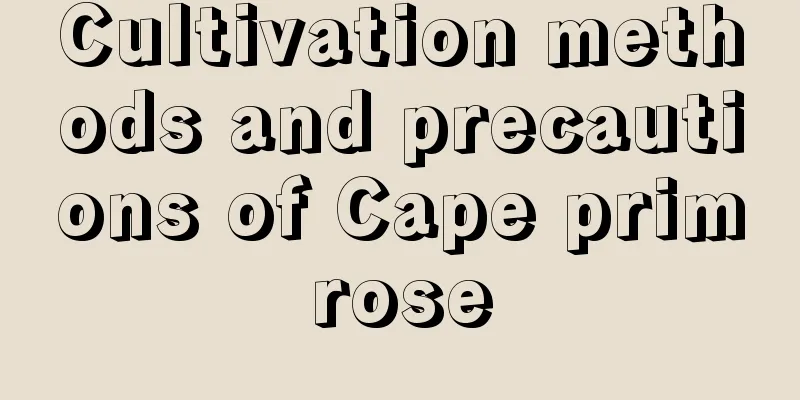Cultivation methods and precautions of Cape primrose

How to grow Cape primrosePot soil selectionCape primrose is very suitable for potted cultivation. When choosing potting soil, you can choose a small and shallow pot. The soil should be fertile, loose, and breathable. The drainage ability must be good and the soil should be neutral. Light and temperatureCape primrose does not require much light, prefers a semi-shaded growing environment, and avoids strong direct light, but needs moderate exposure to sunlight. Bright scattered light is the best choice. The temperature should be kept within an appropriate range, between 16℃ and 25℃. If the temperature is high in summer, the Cape primrose can be placed in a cool and ventilated place for maintenance. When the temperature is low in winter, it can be placed indoors for maintenance. Watering and fertilizingWhen growing Cape primrose, you must strike a balance in water and fertilizer management and apply water and fertilizer appropriately. Keep the air humidity in the growing environment of Cape primrose between 50%-60%. Watering depends on the growth condition of the plant. Generally, when the soil in the pot of Cape primrose is dry, you can water it. Pay attention to the amount of watering and do not allow water to accumulate, otherwise the stems of the Cape primrose will rot. When applying fertilizer, you need to apply thin fertilizer, not too concentrated. Generally, during the growing season, you can apply fertilizer once every half a month. Reproduction methodCape primrose is propagated by sowing or cuttings. Cape primrose cultivation precautionsDiseasesThe most common disease of Cape primrose is stem rot. There are many reasons for stem rot, and water accumulation in the pot is the most common cause. When stem rot occurs, the harm is greater and preventive measures need to be taken in time. HibernationWinter is the dormant period of Cape primrose. The plant grows slowly, so you need to reduce watering, stop fertilizing, and take good insulation measures. |
<<: Cultivation methods and precautions of silk flower
Recommend
How many years does it take for loquat to bear fruit?
Introduction to loquat planting Loquat prefers wa...
When and how to plant edamame
Edamame planting time 1. Different varieties of e...
How to grow Schefflera in autumn
1. Replace the soil In autumn, you can observe th...
Disease and Pest Control of Lyreleaf Coral
Diseases of Lycoris Symptoms of sooty disease of ...
Can succulents be exposed to rain? (What to do if succulents grown outdoors are exposed to rain?)
Is it good for succulents to get caught in the ra...
Can the fruit of the elmleaf plum be eaten?
Fruits of Prunus armeniaca Are the fruits of the ...
How to sow moss phlox
How to sow moss phlox sowing Before sowing, the s...
How to cultivate Chunlan
Spring orchid growth conditions Chunlan prefers a...
How to prune boxwood bonsai
Boxwood bonsai pruning Boxwood bonsai are usually...
Can baking soda water be used to water flowers? What is the role of watering flowers?
Can baking soda water be used to water flowers? B...
What vegetables are best to plant in July?
July is the hottest month of summer, which brings...
What nutrients does pumpkin have and what are the benefits of eating it
1. What nutrients does pumpkin have? Pumpkin is r...
Coral cherry cultivation methods and precautions
Coral cherry is generally strong and easy to main...
How to change the soil and pot of Anthurium
Effects and requirements of changing soil and pot...
The efficacy and function of Buddaria
Common Benefits of Buddleija Buddleija is pungent...









